In 1908, a loop line and locomotive watering point were built at the “55 Mile Siding” and the name was changed to Kockatea. This name was taken from the Aboriginal name for a nerby ancient watercourse. The name Tenindewa was adopted in 1909.
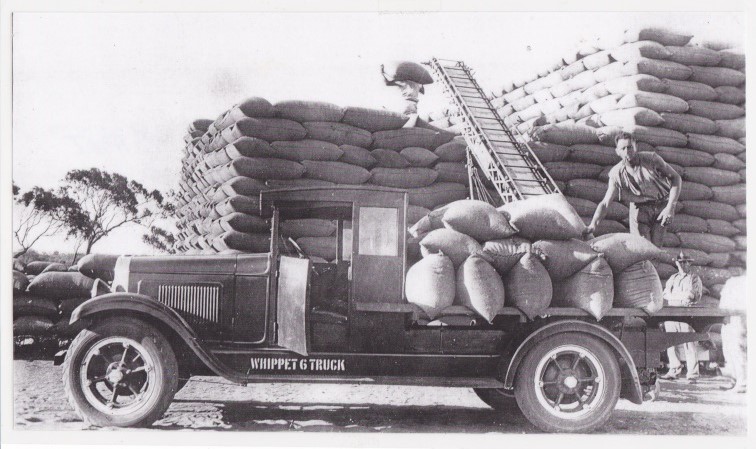
Ralph Short unloading bagged wheat, 1935. (Note tree to the left of stack still stands today)
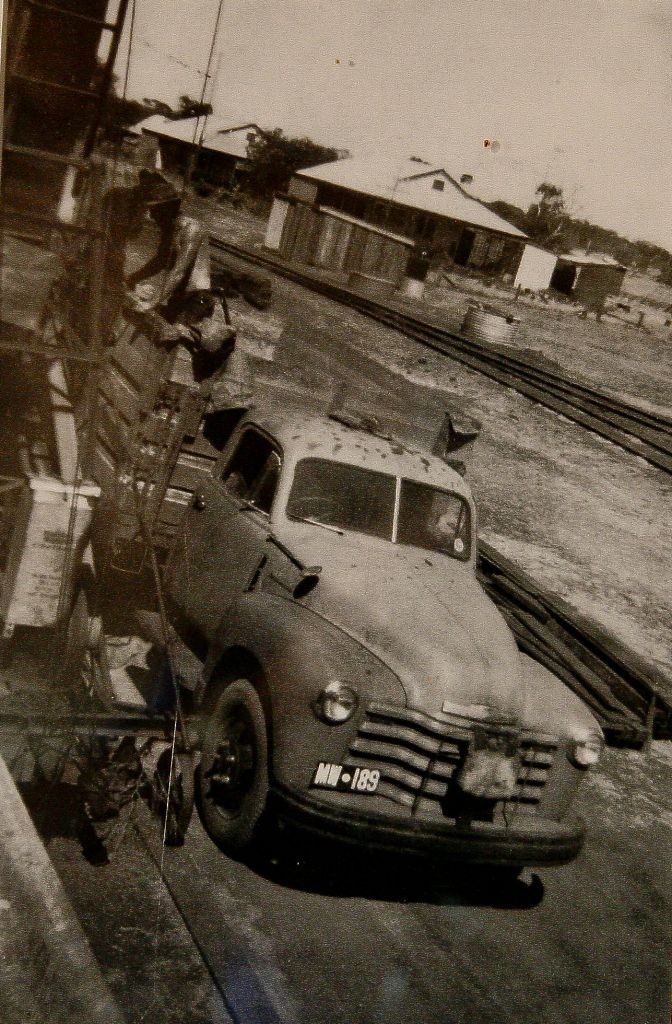
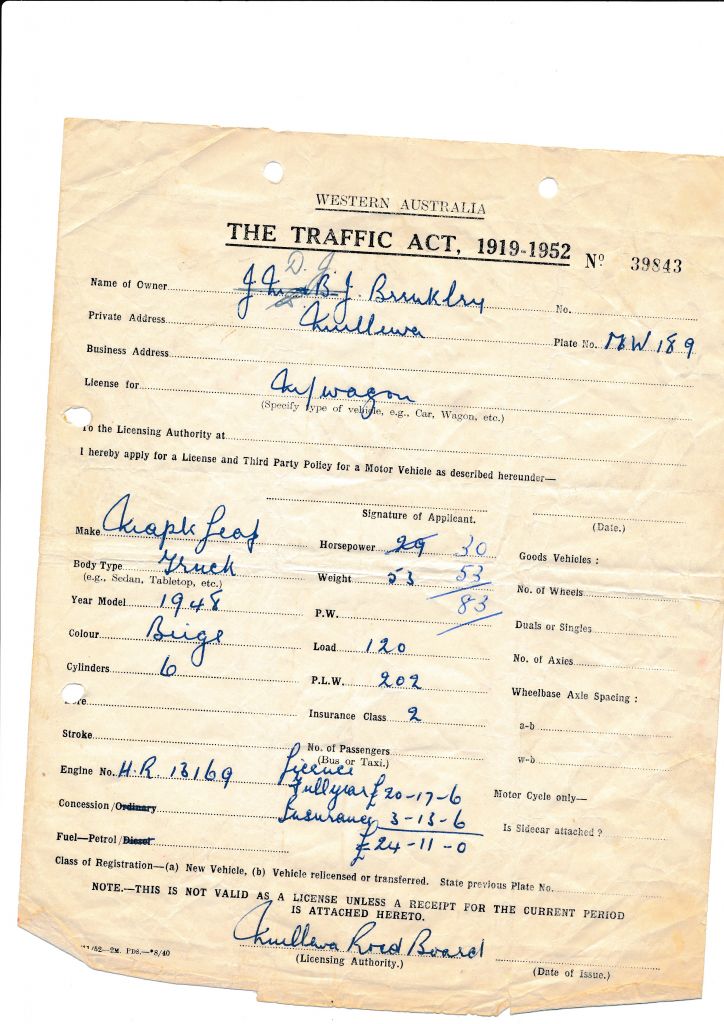
Re. Maple Leaf Truck MW.189 was purchased in 1948 by Walter Brenkley. Walters truck was a Beige coloured Maple Leaf made by General Motors in Canada. It had a “crash type” gearbox. (supplied by Doug Brenkley January 2020)
Read more about the town and siding in the article linked below.
CBH Receival Point
CBH erected a 1,900 tonne bin in Tenindewa in 1936, with a small bulkhead of 1,100 tones added in the early 1950s. An additional 7,800 tonne bulkhead was constructed later in the 1950s.
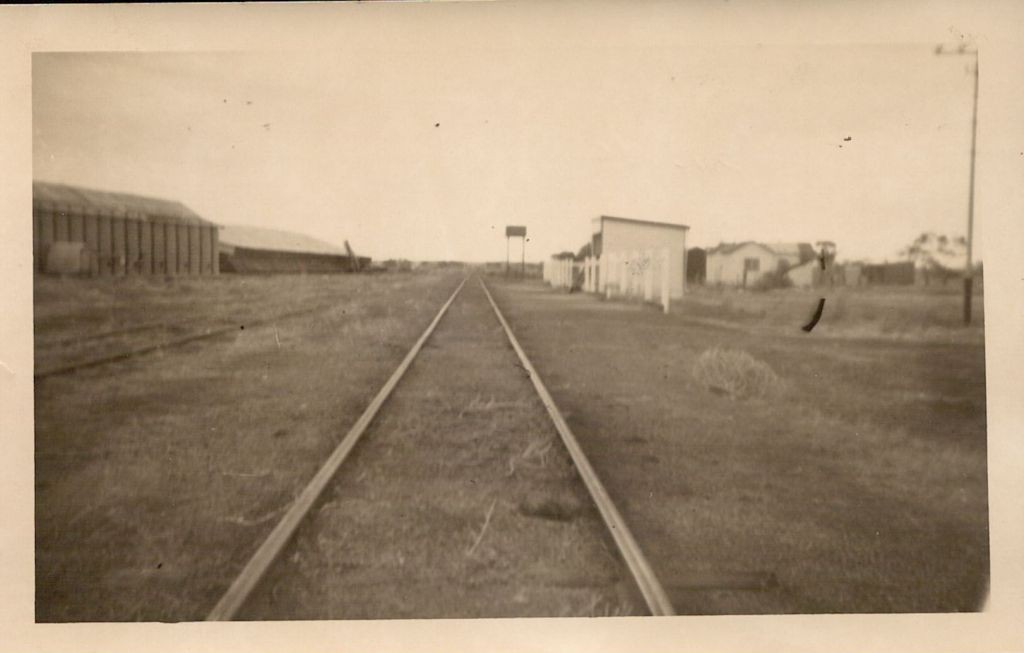
View of receival point looking west.
The record receival for Tenindewa was set in 1967 when 8,514 tonnes were delivered.
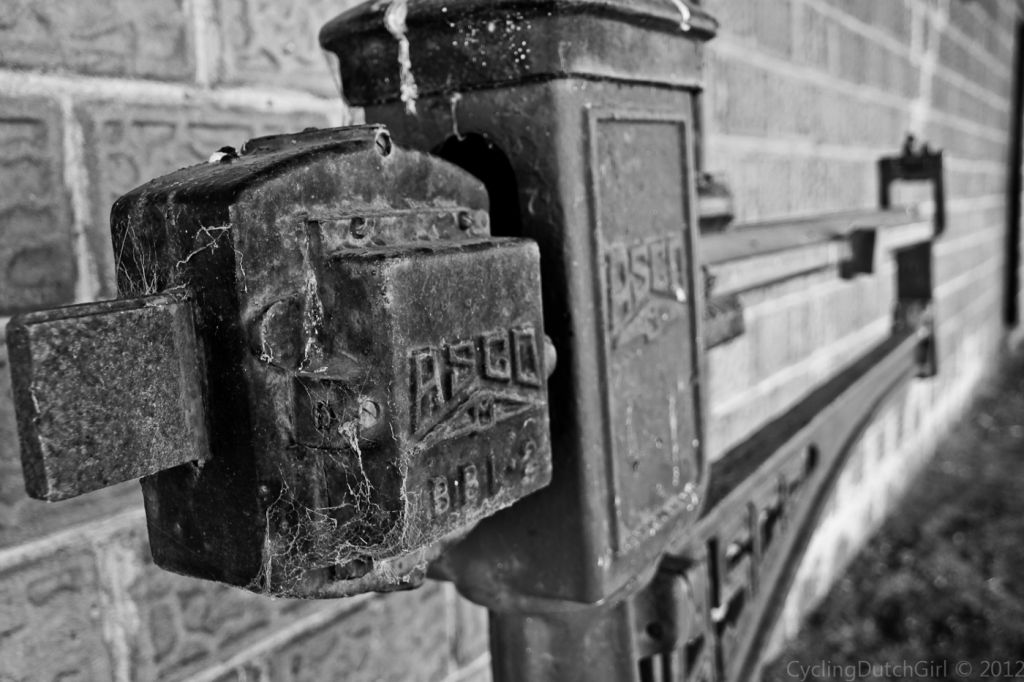
This Beam Balance is a relic of the old CBH weighbridge. That (CBH) story is in the website It is now residing outside the Old Store
The site closed in 1974.

Looking south from the Old Store. The big building to the right was called a CBH “H Type” storage. That one held perhaps 2500 tonnes
The iteme protruding above the roof was a CBH “Country Elevator”
The building foreground on the left (on this side of the line) was the Tenindewa Siding Shed for WAGR
The picture below was taken pre “Bulk Handling”
The switch from bags to bulk started at the time of the birth of CBH (1933)
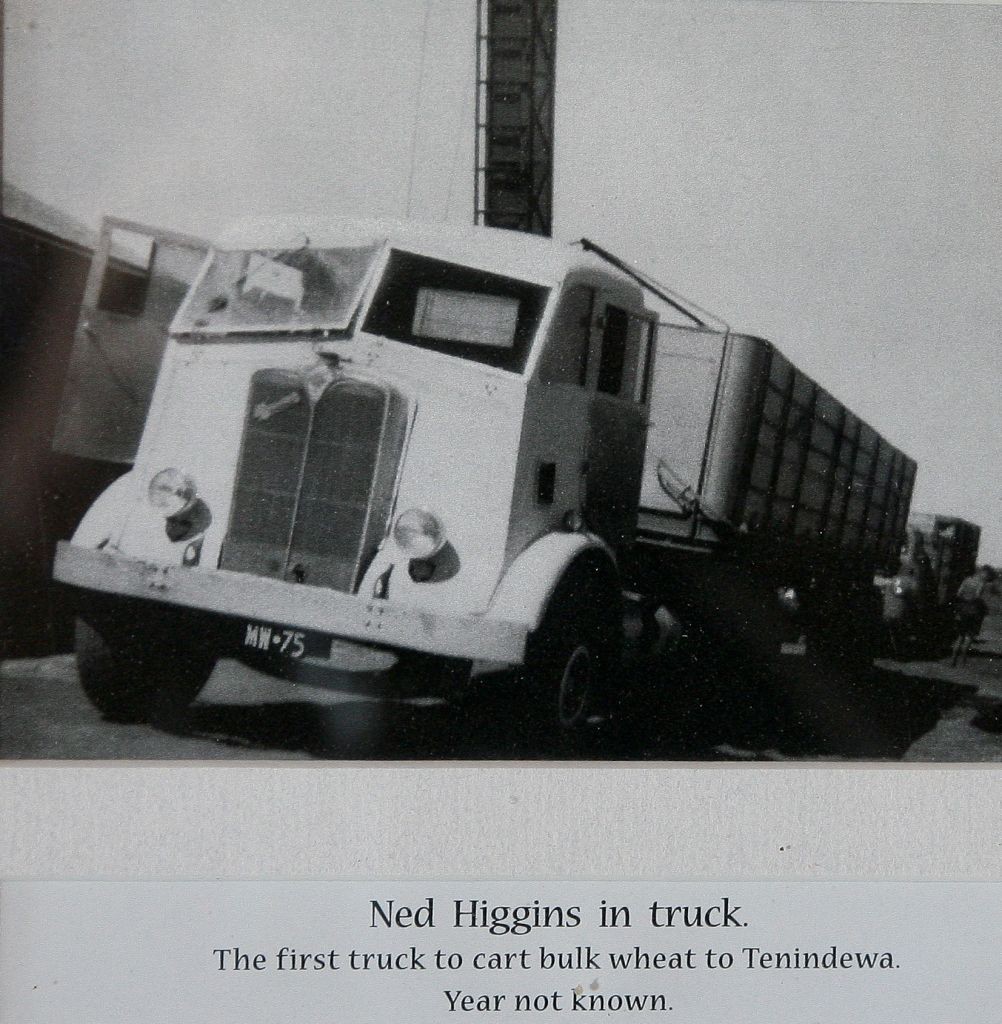
Probably late 1950s The progression from bags to bulk went from just sown bags (as depicted) that were stacked and carted on trucks/drays/lorries onto open bags carted upright and open (unsown) which were tipped into the hoppers at the point of delivery and mechanically pumped into the bulkhead. In the late 1950’s the growers fitted “bins” to their trucks and converted bags to bulk in the paddock with the aid hydraulic bag loaders. The last and final change came in the 1960’s when harvesters began appearing with augers and thus dispensing with bags altogether.
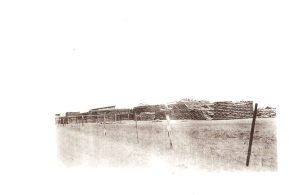
Stockyards can be seen at the very left forground (They were build 1921 and replaced in 1944) Goods Shed middle ground Griffiths Shop extreme right (It was built 1935)
Share this Post
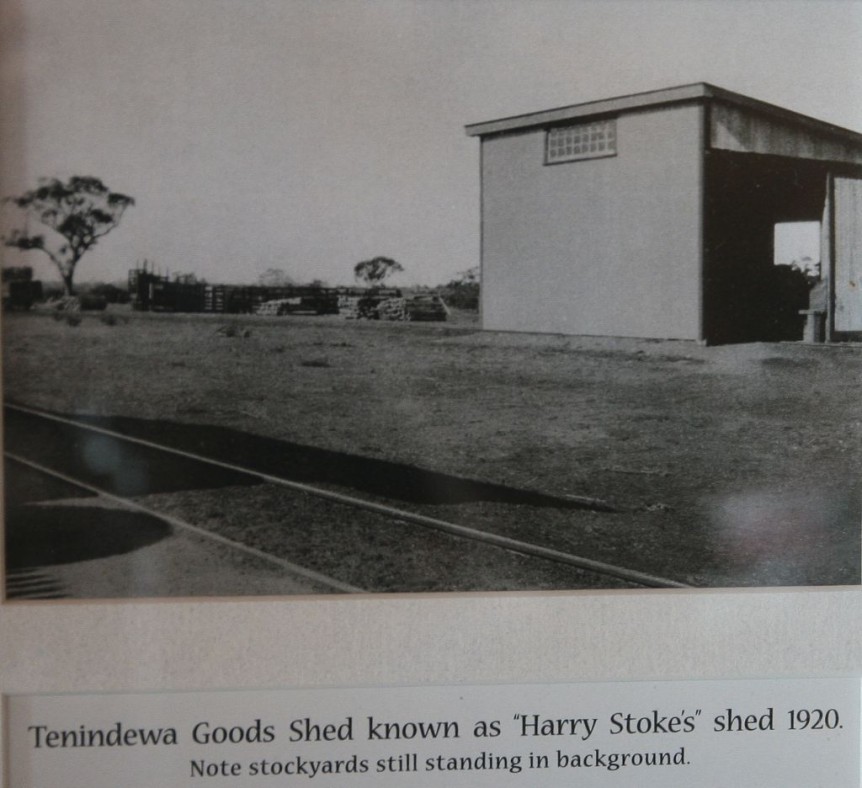
Comments
Lived Tenindewa appointment 1948 – 53